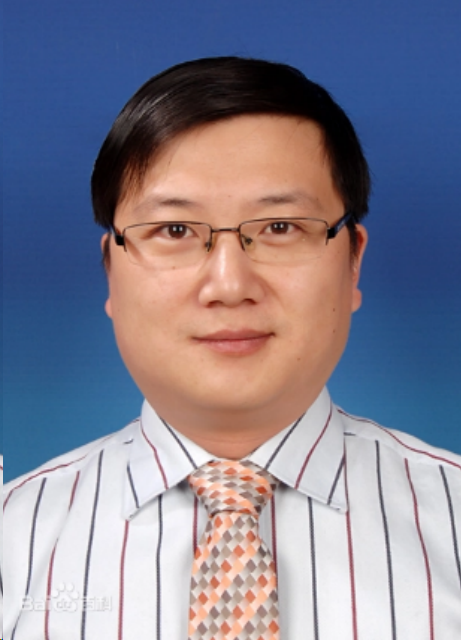
搜索网站、位置和人员

新闻与活动 活动信息
Chemistry Colloquium | Xiaoming Sun: Materials and Interface Engineering for Better Hydrogen Energy Applications
时间
2024年4月18日(周四)
下午16:00-17:30
地点
西湖大学云谷校区E10-201
主持
西湖大学理学院PI 段乐乐 教授
受众
全体师生
分类
学术与研究
Chemistry Colloquium | Xiaoming Sun: Materials and Interface Engineering for Better Hydrogen Energy Applications
时间:2024年4月18日(周四)下午16:00-17:30
Time:16:00-17:30, Thursday, April 18th, 2024
主持人: 西湖大学理学院PI 段乐乐教授
Host: Prof. Lele Duan, PI of School of Science, Westlake University
地址:西湖大学云谷校区E10-201
Venue: E10-201, Yungu Campus, Westlake University

孙晓明教授
北京化工大学化学学院
Prof. Xiaoming Sun,
Beijing University of Chemical Technology, Beijing 100029
* E-mail: sunxm@mail.buct.edu.cn
主讲人/Speaker:
孙晓明,教授,博士生导师。2000年和2005年于清华大学化学系获理学学士和理学博士学位。2008年在Stanford University完成博士后研究回国,进入北京化工大学化工资源有效利用国家重点实验室工作。主要从事无机纳米材料化学研究,在电解水、燃料电池和气体超浸润电极器件领域取得系列进展。
目前已在Joule,Chem,Nat. Catal.,Nat. Commun.,JACS,Angew Chem,Adv Mater.等化学和材料类国际主流刊物以通讯作者发表论文180余篇,总引用30000余次;出版专著一本。申请国际专利8项,获授权2项;获国家发明专利授权40余项,超10项已经完成转化。现承担国家自然科学基金重点项目、国家重点研发项目等多项科研项目。2011年获国家自然科学基金杰出青年基金资助,2019年获中组部万人计划领军人才。
Professor Xiaoming Sun joined the State Key Laboratory of Chemical Resource Engineering, Beijing University of Chemical Technology, in 2008. His research interests focus on active site design and controlled synthesis of inorganic nanomaterials, and their utilization in gas-involving electrocatalytic reactions, including water electrolysis, fuel cells, and metal–air batteries. He proposed the concept of gas superwetting electrodes (superaerophobic or superaerophilic electrodes) based on nanoarray architecture and employed them to enhance gas transfer in gas-involving electrocatalysis. He has co-authored over 200 scientific papers which have been cited over 30000 times.
Professor Xiaoming Sun is the owner of: National Science Fund for Distinguished Young Scholars (2011), Leading Innovative Talent of Science and Technology of Ministry of Science and Technology (2017), Leading Talent of "Ten Thousand Plan" - National High Level Talents Special Support Plan (2019), Executive Chairman of Young Committee and Associate Chairman of Hydrogen Energy Committee in China Renewable Energy Society.
讲座摘要/Abstract:
In this report we want to provide some insightful fundamental understanding of the materials design, and interfacial wetting behavior engineering based on micro-/nano- structure for improving the conversion efficiency in hydrogen energy.
For electrode materials optimization, hetero-valent ion repulsion principle is proposed and applied in the layered double hydroxide systems, to help realize the atomic dispersion of M3+ ions (e.g. Fe3+ or Al3+) in M(OH)2 (e.g. Ni2+ or Mg2+). Based on the principle, we introduced a series of high valent ions (e.g. V4+, Cr3+, Co3+) into the system to increase the oxygen evolution reaction (OER) activity. The principle is also extended to MO2 (M=Ru or Ti) based oxides.
For improve the diffusion of gas for bubble emission and consumption reactions. We:1) constructed nanoarray structures on current collector for water splitting to make them superaerophobic. By cutting the three phase contact lines to discontinued dots, the bubbles get relates at 1/1000 volume and enhance the current increase rate by 60% in water electrolysis. Following that, the pin-rise mode for nanobubble formation and larger current increase rate index were also revealed by home-made real time monitor system (e.g. high speed optical microscopy, electrochemical SPRi system). 2) To optimize the bubble/electrode interface dynamics of fuel cells, a bubble pumping consumption chronoamperometry method was developed to measure the diffusion efficiency and active site density. These works should shed light on the understanding of dynamics at the electrode/electrolyte interface of gas-involving electrochemical reaction, and be inspiring for electrode optimization.
Keywords: Bubbles, Catalysts, Diffusion, Electrodes, Surface interaction.
References
[1] Xu W, Lu Z, Sun X, et al. Superwetting electrodes for gas-involving electrocatalysis[J]. Accounts of Chemical Research, 2018, 51(7): 1590-1598.
[2] Li M, Xie P, Yu L, et al. Bubble Engineering on Micro-/Nanostructured Electrodes for Water Splitting[J]. ACS Nano, 2023, 17(23): 23299–23316.
[3] Yu J, Hu K, Zhang Z, et al. Interfacial nanobubbles’ growth at the initial stage of electrocatalytic hydrogen evolution[J]. Energy & Environmental Science, 2023, 16(5): 2068–2079.
[4] Yang Y, Qin J, Hu K, et al. Self-flooding behaviors on the fuel cell catalyst surface: an in situ mechanism investigation[J]. Energy & Environmental Science, 2023, 16(2): 491–501.
[5] Li M, Xu W, Zhou D, et al. Bubble pump consumption chronoamperometry for evaluating gas diffusion electrodes[J]. Chem Catalysis, 2023, 3(10).
[6] Lu Z, Zhu W, Yu X, et al. Ultrahigh hydrogen evolution performance of under‐water “superaerophobic” MoS2 nanostructured electrodes[J]. Advanced Materials, 2014, 26(17): 2683-2687.
[7] Lu Z, Sun M, Xu T, et al. Superaerophobic electrodes for direct hydrazine fuel cells[J]. Advanced Materials, 2015, 27(14): 2361-2366.
讲座联系人/Contact:
理学院,沈闵黑籽,邮箱:shenminheizi@westlake.edu.cn
School of Science, Shenminheizi, Email: shenminheizi@westlake.edu.cn

















